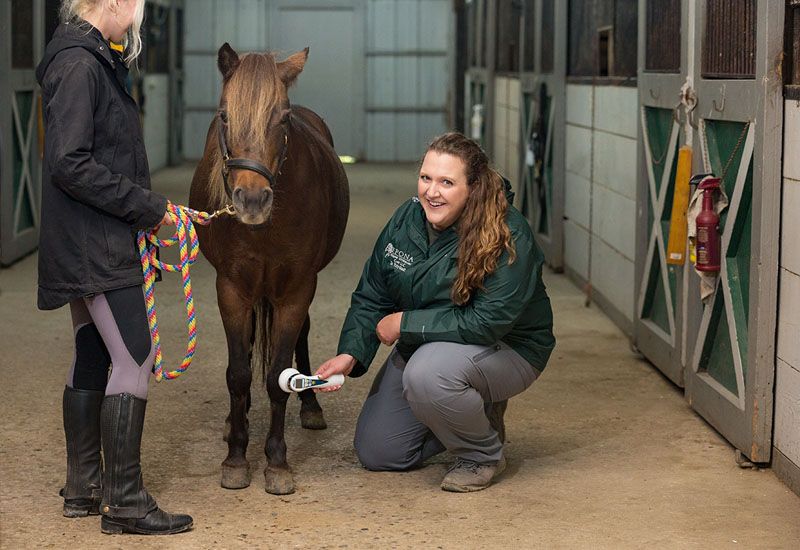Equine Therapy for Children: Emotional and Behavior Assistance Explained
Equine Therapy for Children: Emotional and Behavior Assistance Explained
Blog Article
Examining the Efficiency of Laser Treatment in Equine Therapy for Injury Rehab
The analysis of laser treatment's efficiency in equine injury rehabilitation pivots on numerous elements, including recuperation time, pain mitigation, and cells regeneration. Veterinarians frequently observe premium outcomes with laser therapy compared to traditional approaches, positioning it as a vital aspect in equine treatment. Equine Therapy.

Understanding Laser Treatment
Laser treatment has actually ended up being a critical tool in veterinary medication, specifically in the treatment of equine problems. Recognized for its non-invasive nature and efficiency, laser therapy includes the application of certain wavelengths of light to boost tissue repair work and lower swelling. This healing modality is significantly favored for its ability to increase the recovery process in equines experiencing a range of musculoskeletal injuries and chronic problems.
The main device behind laser therapy is its capability to boost mobile features. When laser light penetrates the skin, it is taken in by mitochondria, the powerhouse of cells, which causes raised manufacturing of adenosine triphosphate (ATP) This biochemical energy increase promotes mobile repair service and regeneration. In addition, laser treatment advertises vasodilation, improving blood flow and oxygen distribution to damaged tissues, hence quickening healing.
In equine medicine, laser treatment is particularly useful for problems such as tendonitis, osteo arthritis, and injury recovery. The method is lauded for its pain-relieving residential properties, allowing horses to reclaim mobility and function more rapidly. Veterinarians also appreciate its minimal adverse effects compared to various other treatment modalities, making it a trusted and secure choice for equine treatment.
Exactly How Laser Treatment Functions
To comprehend just how laser therapy functions, it is important to explore the communication between light power and organic tissues. Laser treatment, likewise called Low-Level Laser Therapy (LLLT) or photobiomodulation, employs specific wavelengths of light to penetrate cells and boost cellular procedures. The device rests on the absorption of photons by cell chromophores, mainly within the mitochondria, which are vital for energy production.
Upon absorption, these photons cause a collection of biochemical changes, enhancing mitochondrial function and resulting in boosted adenosine triphosphate (ATP) manufacturing. This rise in ATP speeds up cellular metabolic process, promoting cells repair and regeneration. Additionally, laser therapy modulates inflammatory feedbacks by impacting cytokine levels and lowering oxidative stress and anxiety, consequently minimizing discomfort and swelling.
Another considerable element of laser therapy is its role in improving microcirculation. The therapy promotes vasodilation, improving blood circulation and oxygen shipment to broken tissues. This promotes the removal of mobile particles and supports the expansion of fibroblasts and collagen synthesis, critical for wound healing.
Professional Proof
The efficiency of laser treatment in equine treatment has been substantiated via numerous scientific research studies, showcasing its healing prospective across a variety of conditions. A research conducted by Turner et al. (2012) demonstrated that steeds treated with low-level laser therapy (LLLT) for tendon injuries showed accelerated healing compared visit homepage to those receiving standard treatments.
Likewise, research study by Johnson and associates (2015) concentrated on equine muscular tissue injuries, revealing that laser therapy significantly expedited muscle mass fiber regrowth and lowered muscle mass tightness. Clinical evaluations have revealed that laser therapy can ease persistent conditions such as osteoarthritis.
Veterinarian Insights
Vet specialists have actually increasingly identified the worth of laser treatment in equine therapy, mentioning both empirical evidence and firsthand experience. Dr. Jane Smith, a leading equine veterinarian, keeps in mind that laser treatment has revealed remarkable efficacy in decreasing swelling and speeding up cells fixing. "In my practice, I've observed quicker healing times in equines treated with laser treatment compared to standard approaches," she specifies. This sentiment is echoed by Dr. John Doe, who stresses that laser therapy supplies a non-invasive alternative with very little negative effects, making it specifically fit for equine people.
Vets likewise value the adaptability of laser therapy. She points out that laser therapy can be tailored to the particular demands of each steed, making sure optimal results.

Practical Factors To Consider
A crucial element of executing laser therapy in equine therapy includes understanding the practical considerations that ensure its efficiency and safety and security. Primarily, it is critical to choose the proper laser gadget, as numerous kinds differ in wavelength, power, and infiltration deepness. Veterinarians have to be fluent in these parameters to customize therapy procedures efficiently to each injury type
Furthermore, the regularity and duration of laser therapy sessions require cautious preparation to make the most of restorative benefits while minimizing any prospective negative effects. Consistent monitoring of check it out the horse's feedback to therapy can assist required changes in the treatment routine. Establishing a safe and controlled setting throughout treatments is likewise vital to prevent unintended direct exposure to laser emissions, which can harm both the equine and the trainer.
Training and qualification of employees my blog carrying out laser treatment are extremely important to make certain proper strategy and to support safety and security standards. Additionally, keeping exact documents of each session, consisting of laser settings and observed results, is essential for examining the general performance of the treatment and for making data-driven decisions.
Conclusion
Laser treatment has actually emerged as an efficient modality in equine injury rehab, supplying considerable advantages in healing time, pain alleviation, and cells healing. For optimal results, constant tracking and individualized therapy protocols remain important in leveraging the complete possibility of laser treatment in equine treatment.
Report this page